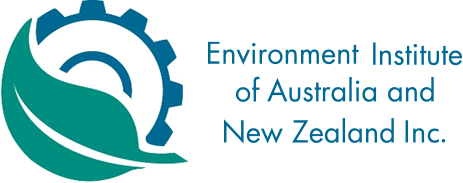-
Member Login
- Home
- About
- Institute Groups
- Membership
- Events
- News & Publications
- Institute Programs
- Resources
- Jobs Board
- Contact Us
- Site Info
David Greig MEIANZ CEnvP
David Greig MEIANZ CEnvP
Abstract | Waipoua: A place with its own management style
Roads pass through many landforms and habitats and their impacts, both short and long-term are often not well researched, albeit authorisation processes (permitting) involve some assumptions and specific monitoring. In highly sensitive environments, such as those with high ecological values, greater care is expected from roading authorities to avoid or mitigate significant impacts.
The NZ Transport Agency’s (Transport Agency) State highway 12 passes through Waipoua Forest, one of the largest remaining tracts of native forest in Northland, 3 hours’ drive north of Auckland. Waipoua is home to Tane Mahuta and other kauri (Agathis australis), which are found only in Northern New Zealand and have high cultural values. The Transport Agency implements the Waipoua Forest Sanctuary Management Plan (Plan) that specifies its activities in the forest defining goals for overall vegetation control (maintenance of taonga plants, clearance, revegetation, pest plants and weeds), soil disturbance and drainage management aimed at protecting and maintaining Waipoua’ s unique character and values.
The Plan provides the framework for collaboratively managing the forest with Te Roroa as the land owners having traditional cultural and spiritual responsibilities, the Department of Conservation dealing with conservation values and biosecurity along with both the Ministry of Primary Industries and Northland Regional Council (particularly for Phytophthora agathidicida), and the Transport Agency with its highways maintenance contractors. Teaming up, all work together overseeing implementation of the Plan and needed changes.
Management is uniquely adaptive and outcomes are measured with 6-monthly vegetation surveys underpinning weed and taonga plant management. The approach supports the special status of this section of highway both requiring and permitting non-standard road design and maintenance that helps to protect the forest from ‘business as usual’ methods. Monitoring results, lessons learned, discussions between parties and technical input from specialist ecologists are all part of developing the environmental management approach for Waipoua.
Bio | David Greig MEIANZ CEnvP
 David has worked for the NZ Transport Agency since 2007, providing advice on managing effects on natural systems to ensure projects can meet statutory needs and use also good practice. With an academic background in biophysical issues David has worked with a range of engineering teams, statutory planners and stakeholders for 35 years to ensure they are all talking the same language when dealing with the natural environment. David has been able to influence the Transport Agency towards better meeting its environmental and statutory responsibilities, something he finds rewarding.
David has worked for the NZ Transport Agency since 2007, providing advice on managing effects on natural systems to ensure projects can meet statutory needs and use also good practice. With an academic background in biophysical issues David has worked with a range of engineering teams, statutory planners and stakeholders for 35 years to ensure they are all talking the same language when dealing with the natural environment. David has been able to influence the Transport Agency towards better meeting its environmental and statutory responsibilities, something he finds rewarding.
We acknowledge and value the rights and interests of Indigenous Peoples in the protection and management of environmental values through their involvement in decisions and processes, and the application of traditional Indigenous knowledge.

